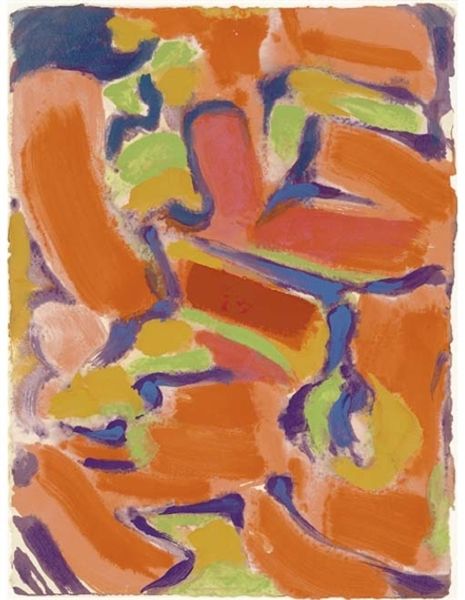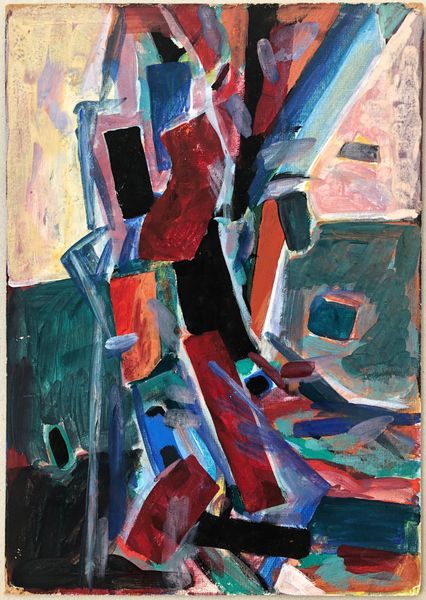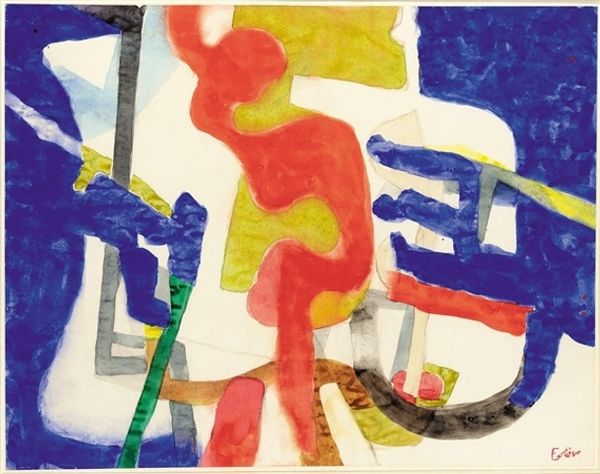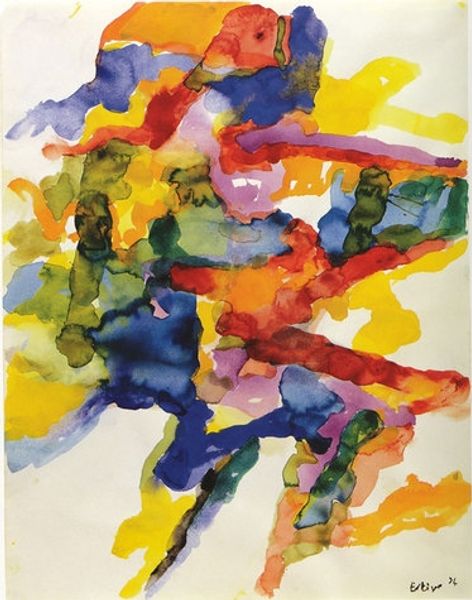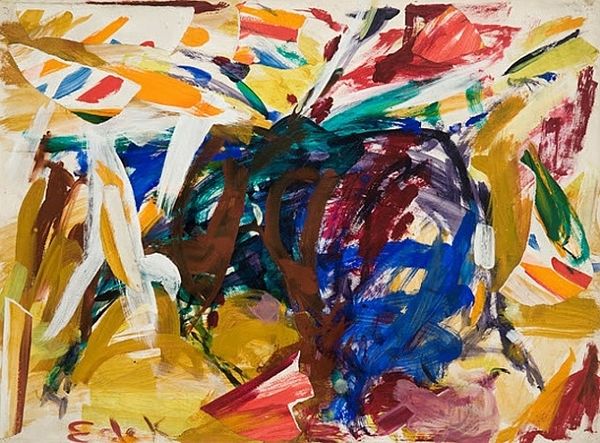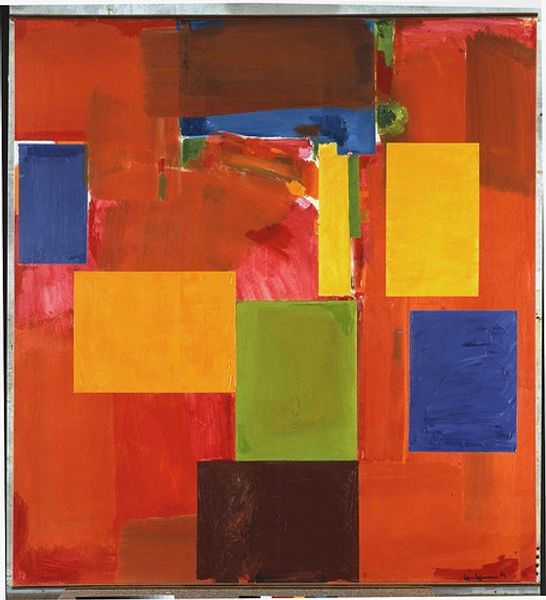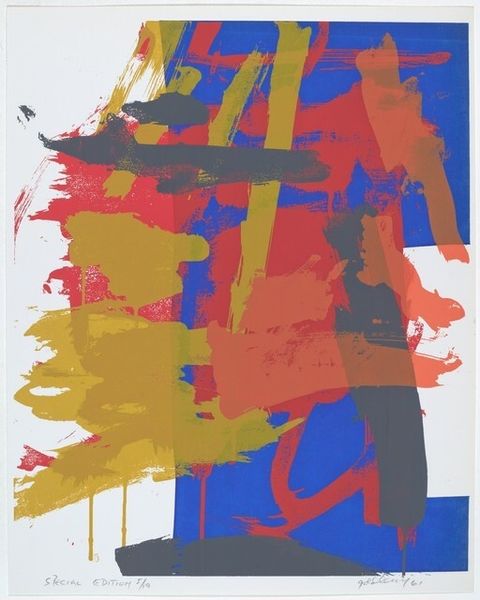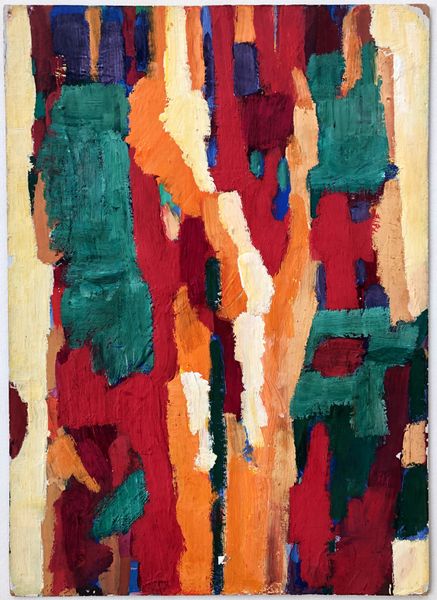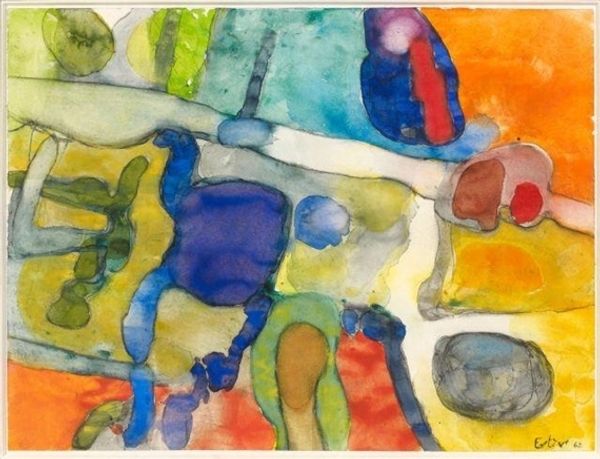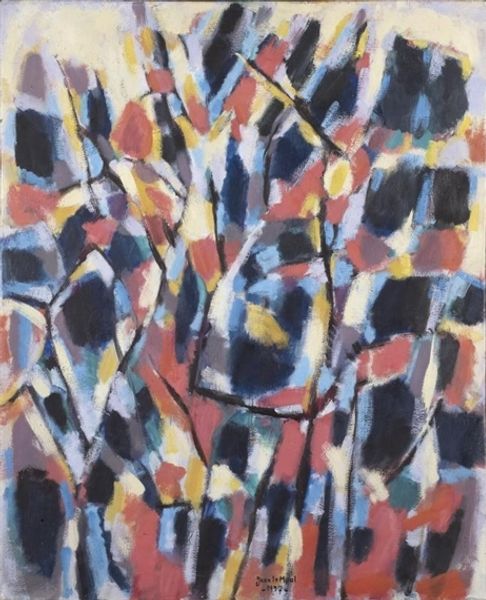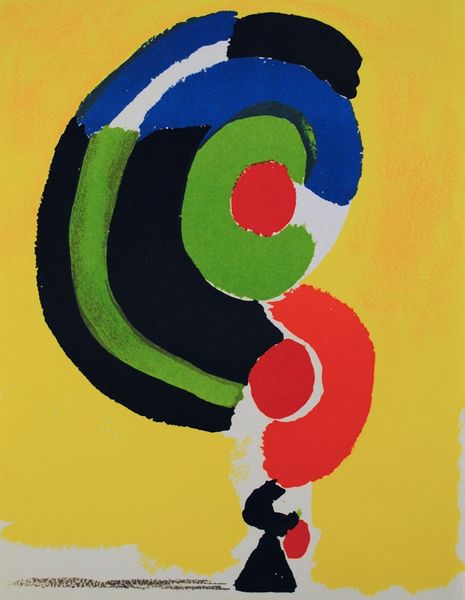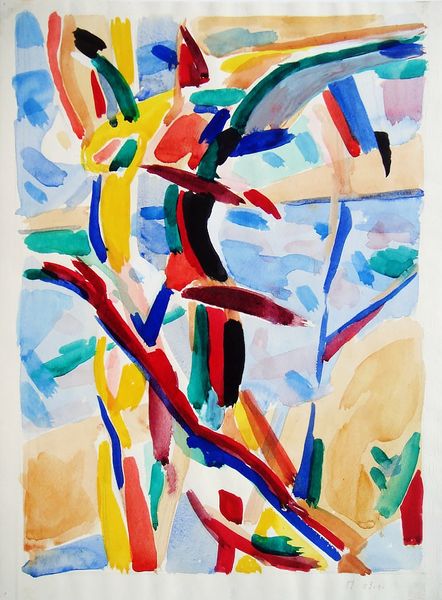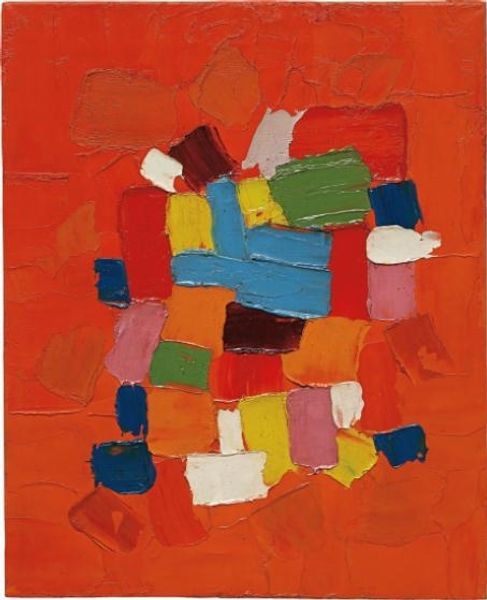
watercolor
#
abstract-expressionism
#
abstract painting
#
pop art
#
watercolor
#
acrylic on canvas
#
abstraction
Copyright: Hryhorii Havrylenko,Fair Use
Editor: This is Hryhorii Havrylenko's "Composition" from 1963, and it seems to be watercolor and possibly acrylic on canvas. It’s this whirlwind of colors—red, yellow, green, blue— all colliding! I'm curious, what strikes you when you look at this abstract piece? Curator: It feels like controlled chaos, doesn’t it? Havrylenko throws these shapes at us, but there’s an underlying structure, like a hidden melody. Perhaps, these colours represent raw emotions, and their interaction mirrors the complexity of human experience. Do you sense a kind of balance despite the apparent randomness? Editor: I see what you mean, the colors, despite being so vibrant, seem to work together instead of clash. Curator: Absolutely. Now, think about the context: 1963. Havrylenko was creating this in a society where artistic expression was often restricted. This explosion of color could be seen as a quiet rebellion, a subconscious assertion of individual freedom. Does that shift how you view it? Editor: That adds a whole new layer! I was just seeing colours, but now I see a voice, struggling to be heard. Do you think the choice of watercolor contributes to this feeling of freedom? Curator: Precisely. Watercolor, with its fluidity and spontaneity, perfectly embodies that spirit. Imagine trying to cage these hues – impossible! You can almost feel the artist's hand moving freely across the paper. Editor: I didn't consider how the medium itself could contribute to the meaning! Curator: Art is a sum of conscious and subconscious choices! Isn't it exciting how a seemingly simple abstract painting can whisper such powerful stories when you listen closely? Editor: Definitely given me lots to consider; thanks for this illuminating conversation!
Comments
No comments
Be the first to comment and join the conversation on the ultimate creative platform.
